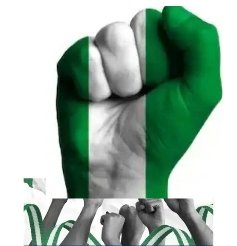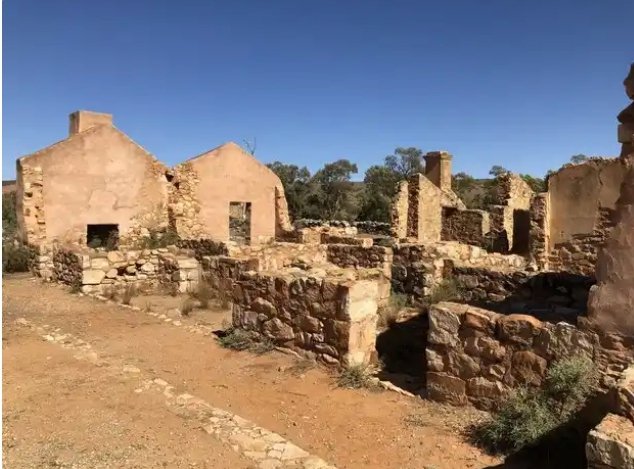NIGERIA : THE JOURNEY AND OUR STRUGGLES FOR FREEDOM FROM COLONIALISM TO NATIONHOOD
Humans can not be exonerated from events that defines their origin, culture, economic, political and leadership systems or structures. They play active roles in creating or finding ways to solve problems that confronts them as a people. They do this when they have come to realize their origin, unique identity, needs, and wants. In the course of this awareness raises the notions for self leadership and sense of control. This would however, force them to device various forms of strategies to overcome their socio-economic, political and leadership oppressors. Definitely as you would expect, history would be made as they face to confront these challenges.
In this article, I would be sharing the changes, the struggles, the milestines that Nigeria has shaped Nigeria's identity and how these events has impacted the world. I would be doing this by looking at three eventful transitions that ushered in the present day Nigeria. These transitions are:
The Pre independence or colonial era
The Independence era
The Post–Independence era
The country called Nigeria is linked to the earliest people who settled there at 1300 BC. Before the arrival of the british colonies in Nigeria, the country was ruled based on regions or divisions. The regions included the north, majorly identified as the hausas, south and eastern regions identified as the deltas and Igbos. Later, the west segregated and succeeded to become its own autonomous region and became part of the regions identified in country.
The indegenous people of the different regions deviced systems of leadership unique to them to govern themselves. For instance, the northern region had centralized institutions on a monarchical system of government. The southerners and easterners were highly decentralized.
Along the regional lines in the country, were also religion adptions. The northern region were predominantly practicing the Islamic religion of which they are still practicing till date. The southern and eastern regions were mostly practicing traditional religion.
THE ECONOMIC SETUP OF THE REGIONS WERE BASED ON AGRICULTURE
Agriculture was the main sustainer of the economies of the different regions and each of the region had a comparative advantage over the other.
The northern region was known by their resourcefulness in cattle rearing, donkeys, camels, and production of some certain crops such as *groundnut, beans, pepper; cocoa and cotton whichi they jointly produced with the western region.
The south and eastern regions showed their economic resilience in the production of palm oil, cassava, yam, plantains, palm wines, coconut, and fishing. All these sustained the economies of these regions.
The eastern region constructed local oil palm plants for processing the oil palm fruits. The oil so produced are used for cooking and the surplus exported to european countries. Infact majority of the agricultural produce were exported to the europe by rich farmers who hired slaves to do the jobs.
As the economy began booming by the production and export of the agricultural commodities, the merchants established contacts with the europeans who saw opportunities in the economic potential of the people. As the merchants exported these commodities to the europe, the europeans became in need of able bodied men and women who could do some menial jobs for them. This brought another item for trading which was not without price, into the lines of trade.
 source The slave trade
source The slave trade
It is at this point that trading in humans creeped in and became what is knowns the slave trade. Humans were now taken and sold to the europe through the local people who had established contacts with them. The slave trade also boomed at that and the slave trade merchants were enriched.
After the berlin congo conference in 1885, the british started to make intrusions into Nigeria as reached by the agreement made there. Onward from 1903, the british widened their administrative scope to the entire fabrics of the Nigeria territories. To ease their administration by reaching to the nooks and cranies, they brought the northern and southern protectorates together by amalgamation in 1914.
By the first thirty years in the 19th century, Nigeria had become a full fledge british colony and introduced their colonial administration in Nigeria. The colonial administration was adjudged to have benefited only few number of Nigerians who had the opportunity to acquire european education. Majority of the Nigerian people were exploited through the administration of the colonial rule as they became concious of the fact that their culture, norms, and traditional establishments are been overshadowed.
The Nigeria economy that was once booming became shrinking as the colonial masters exploited the labor from intelectual and manual standpoints. This is to say that foreign firms became profitably positioned and stiffled local indegenous firms.
The people started becoming dissatisfied with their situation as a result of the colonial administration. Appeals were made on the ground of racism and on issues relating the communities. The appeals were not attended to by the masters. Hence, this marks the beginning of colomial resistance by the local communities.
The resistance to colonial rule became outblown and metamorphosed to a movement by the nationalist. Early in the 1930s, there became a formation of anti colonial activists in Nigeria advocating for more Nigerians to be involved and be part in the administration of Nigeria. This movement was championed and led by the elite who pressurised the the government of the colonial masters to create a continous development plans for Nigerian when the world war II ended. This agitation made the colonial government to embark on infrastructural development including health and education. This improved the lives of average Nigerian.
Nevertheless, the nationalists movement kept mounting pressure from all and sundry calling for constitutional reforms to better serve the needs of Nigerians. The constitutional reforms took place after the WORLD WAR II and it deepened Nigerian's full participation for self governance. At this point, Nigeria became free from british rule in October 1, 1960.
Nigeria became totally free from colonial rule in october 1, 1960 and then became federal republic in 1963. Although this is an achievement that brought futher development in the country, the Nigeria nation had challenges. This phase marked another transition in the quest for political, leadership and economic control. The was divided into north, south, east and west regions for administrative convenience.
Leadership crises erupted from 1966–1967 when several leaders were removed from their offices through military coup and counter coup. The country grapled with political, economic and leadership development challenges during this phase.
The post independence phase left an unforgetable marks in the history of Nigeria's development. In 1967 to 1970, a major war broke in between the Nigeria troops and Biafran agitators from the eastern region who are seeking disintegration from the Nigeria leadership. The region was left devastated as lives and properties were destroyed and economic activities paralysed.
In the course of the war, the Nigeria government got assistance from foreign nations in terms equipment, food supplies, personnels and other forms of help which enabled them to face the war with the biafran troops from the east.
The war lasted for three years and the eastern region was finally captured and integrated into Nigeria. The then head of government decleared the war as “no victor, no vanquished” and a one Nigeria system.
The present day Nigeria have thirty six states and the federal capital territory. It is divided into four main political regions and further sub-regions as the :
- North
- South
- East
- West
Freedom for self leadership and development, is not easy to achieve because it is struggled. It comes with various kinds challenges involving leadership, political and economic control. A long the journey, not all who started it finishes it.
While Some parts of the country have gained some level of more developments after the colonial rule, others have not.
The wounds caused by the civil war were deep and up till today, many part of the eastern region are yet to see development in their communities.
So far, this is our journey and our struggles to nationhood.
I invite the following:



